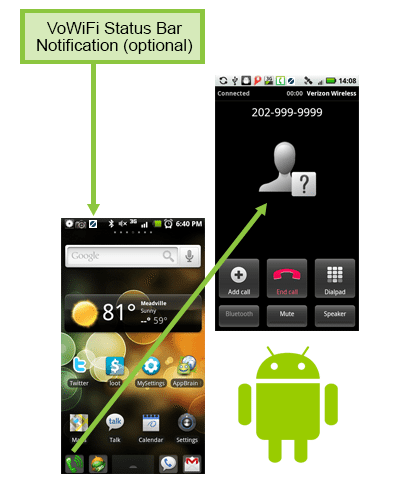SAN ANTONIO – Sprint VP of technology Ron Marquardt told an audience at CCA Global Expo 2014 that the carrier’s current CDMA network’s voice delivery is comparable to VoLTE (voice-over-LTE) in terms of spectral efficiency, and that in the near term Sprint is more focused on voice-over-Wi-Fi than on VoLTE.
Sprint recently launched a voice-over-Wi-Fi client created by Taqua. For most Sprint customers, voice-over-Wi-Fi will require them to download a client, but there are four Sprint devices that are sold with the client pre-loaded. When the user connects to a WiFi hotspot, calls are automatically routed to the Wi-Fi network until the user leaves the area. Taqua says the user does have the option to disable WiFi calling and return to the cellular network if she chooses.
Poor indoor coverage is a problem for many mobile subscribers, particularly in large workplace environments. Many operators are addressing these challenges with DAS and small cell solutions, but re-routing users to existing Wi-Fi hotspots is a more cost-effective solution.
Meanwhile, Marquardt was very clear on his company’s long-term commitment to CDMA vs. VoLTE. “CDMA is going to die, but not anytime soon,” he said. He said Sprint has invested heavily in the technology, and retiring it in the near term would be “an acounting nightmare.”
Sprint uses Qualcomm’s CDMA technology, which includes CMDA2000 1x for voice and limited data, and CDMA2000 1xEV-DO for data services only. CDMA operators usually deploy some 1x carriers and some EV-DO carriers in each cell site in order to provide both voice and data services, according to analyst Andrew Seybold.
Marquardt said that with 80% of network traffic already moving over Wi-Fi networks, voice-over-WiFi is the next logical step. He said that Sprint will eventually move to an all-IP voice network, but that this goal is far in the future.
Follow me on Twitter.

